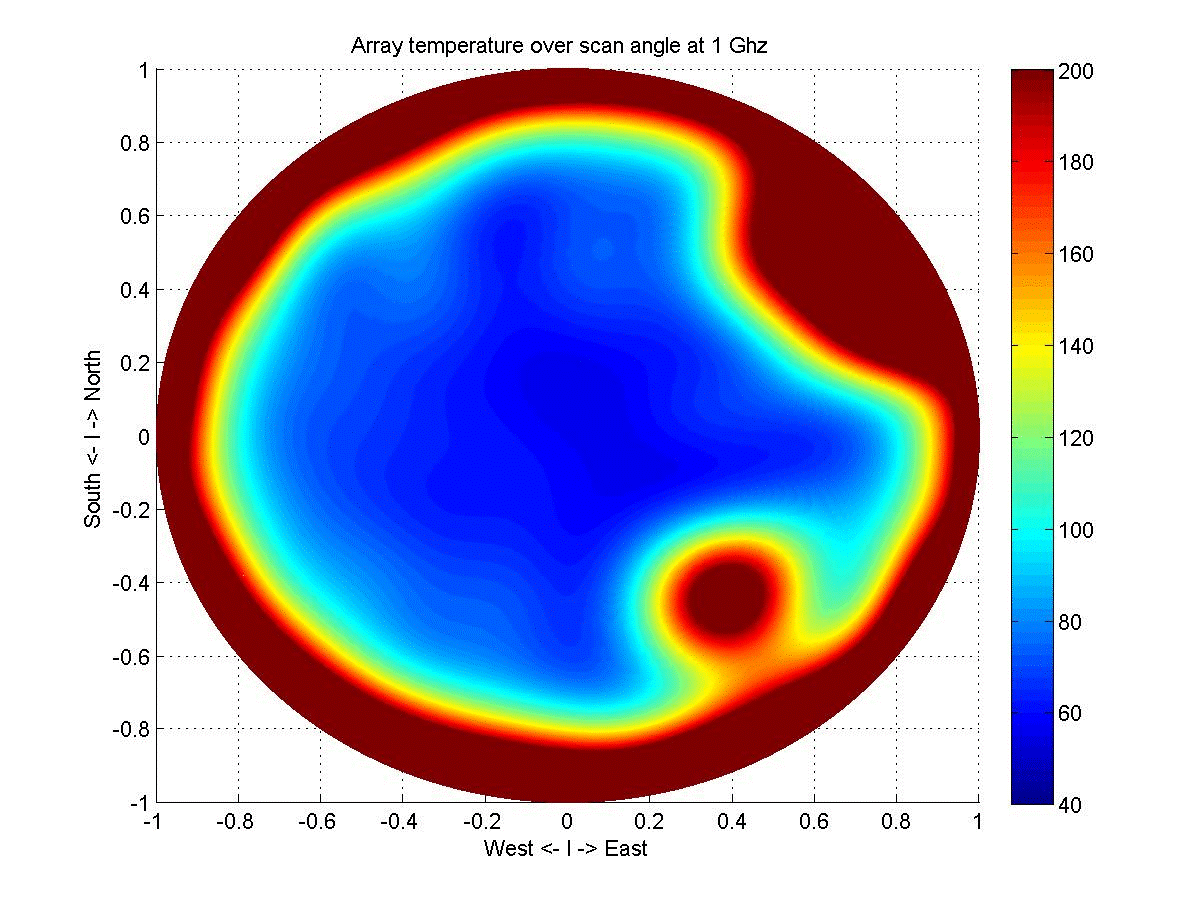| Description: | The AJDI of August 27, 2010 showed the measured system noise temperature of the Apertif tile, used as an Aperture Array, as a function of scan angle at 1400 MHz. Todaysí image is the last one in a series of contributions on simulated and measured properties of this array and shows the processed data from the earlier measurement over the 1000-2000 MHz frequency range at intervals of 25 MHz. At most frequencies below 1700 MHz the system noise temperature over a large scanning range is in the blue region with values even below 50 K at particular scan angles. At scan angles near the horizon the system temperature quickly rises, because the wide beam of this 1mx1m array sees a large part of the warm environment, while the noise coupling contribution increases considerably for these scan angles (see AJDI of August 15 and 25). Visible on most plots is an extended range of high system noise temperature at the location of WSRT telescope 5, close to which the measurements were done. The location of increased noise temperature in the lower right corner of the plots has been verified as being due to the sun.
The plots at 1225 MHz, 1250 MHz and 1600 MHz show sources at locations of GPS and other satellites. At frequencies above 1600 MHz the changing beam patterns, in main beam as well as side lobes, explain the symmetry in the observed noise patterns and result in regions with elevated system noise temperature, particularly going up to 2 GHz. The pattern at 1750 MHz is most likely due to a blind scan angle range of the array near that frequency. The higher frequency results confirm that the 11 cm separation between antenna elements is not optimal at the high end of the Apertif frequency band. Therefore this separation has been reduced to 10 cm in the final Apertif design.
|

